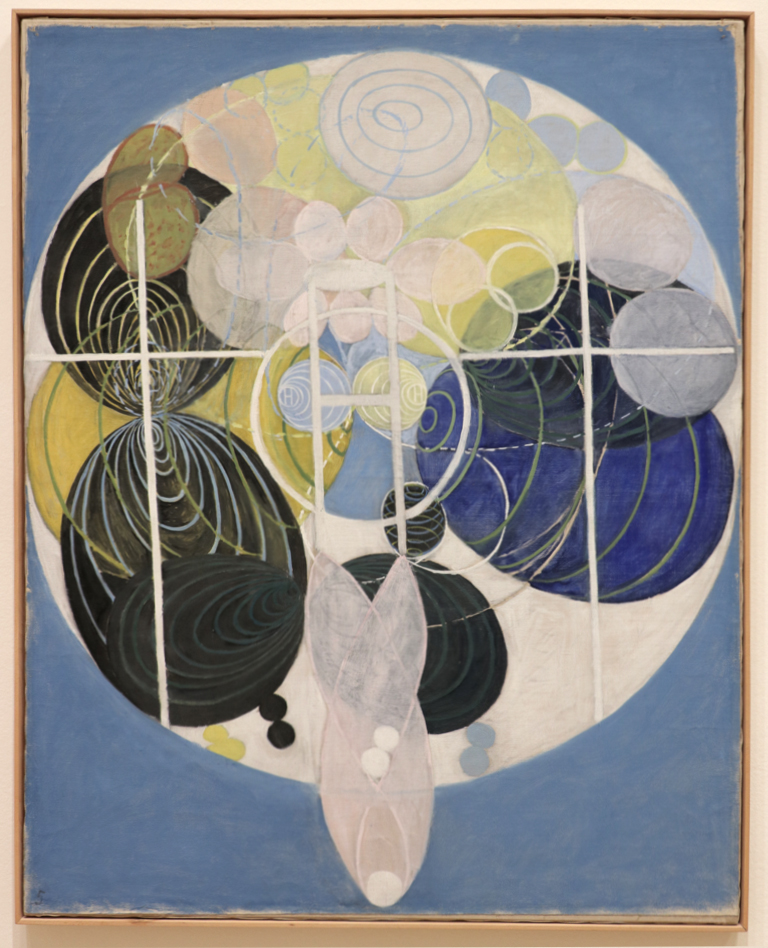Hilma af Klint was a Swedish painter (1862 – 1944)
A lot has been already written about her…Recently, her name has been mentioned more and more often, and the internet offers fascinating and in-depth studies about her work and enigmatic personality.
A pioneer of abstraction and the exploration of the unconscious, she created abstract canvases five years before Wassily Kandinsky and experimented with writing and drawing, guided by the unconscious long before the surrealists, while conducting spiritualist sessions and receiving guidance from higher powers to create her work.
I was fortunate enough to visit the wonderful exhibition dedicated to Hilma af Klint at the Guggenheim in Bilbao!
It was breathtaking and deeply impacted me.
From the very first room, I felt that the paintings created a leap in time.
Careful and methodical, Hilma’s paintings reveal a mystical dimension. Each piece follows a precise and logical order and a clear sequence. Everything is connected, forming a narrative about a hidden space and time, which we experience simultaneously here and now.
I spent a long time in the Guggenheim´s galleries, observing and absorbing each of her works. I felt like her paintings were mysterious mediators, leading me to feel things I’d been carrying inside for a long time and to which I am opening my senses… It was like standing in front of a modern temple…
It is said that Hilma af Klint wished that her works not be exhibited for at least 20 years after her death… and that they never be sold individually!
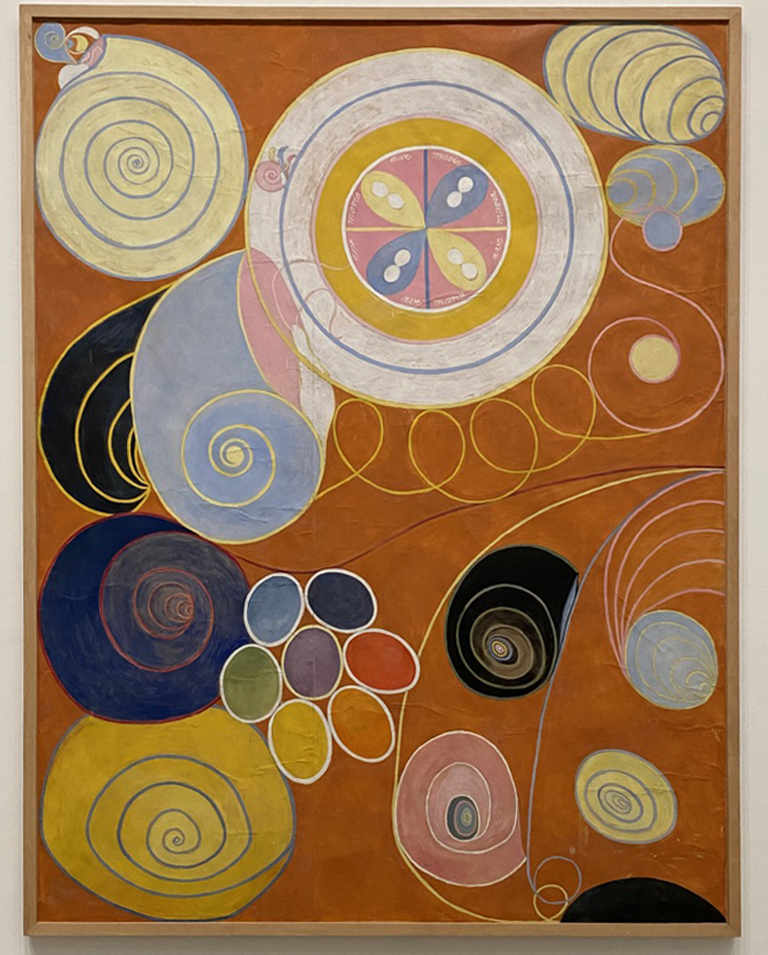
The Ten Largest, Hilma af Klint painting exhibition, Guggenheim Museum Bilbao 2025, photo by ©Bogra art Studio, 2025
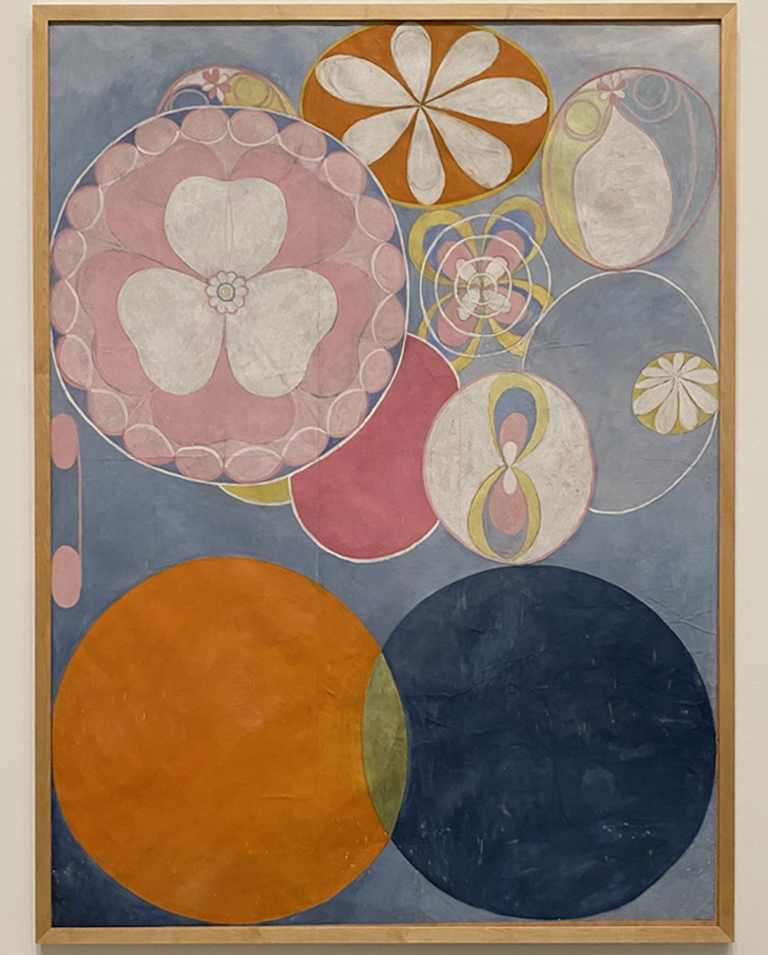
The Ten Largest, Hilma af Klint painting exhibition, Guggenheim Museum Bilbao 2025, photo by ©Bogra art Studio, 2025

Hilma af Klint exhibition, Guggenheim Museum Bilbao 2025, photo by ©Bogra art Studio, 2025
The Ten Largest (1907)
Hilma af Klint began to work on The Ten Largest in the wake of a revelation: her spiritual guides instructed her to make “ten paradisiacally beautiful paintings” which would give the world a glimpse of the four stages of life. The artist created these works, paste of Paintings for the Temple, extremely quickly probably at least partly on her studio floor due to their massive size. She was assisted by two members of her circle, Cornelia Cederberg and Gusten Anderson.
Which a format that was somewhat unusual at the time and painted with tempera -a medium that harks back to the Renaissance and the altarpieces of the Florentine churches that af Klint had admired just a few years earlier during a trip to Italy- these works depict the four stages of life. Childhood, Youth, Adulthood, and Old Age. Like much of The Paintings for the Temple, they also explore themes on the relationship between masculine and feminine. (Guggenheim Museum)
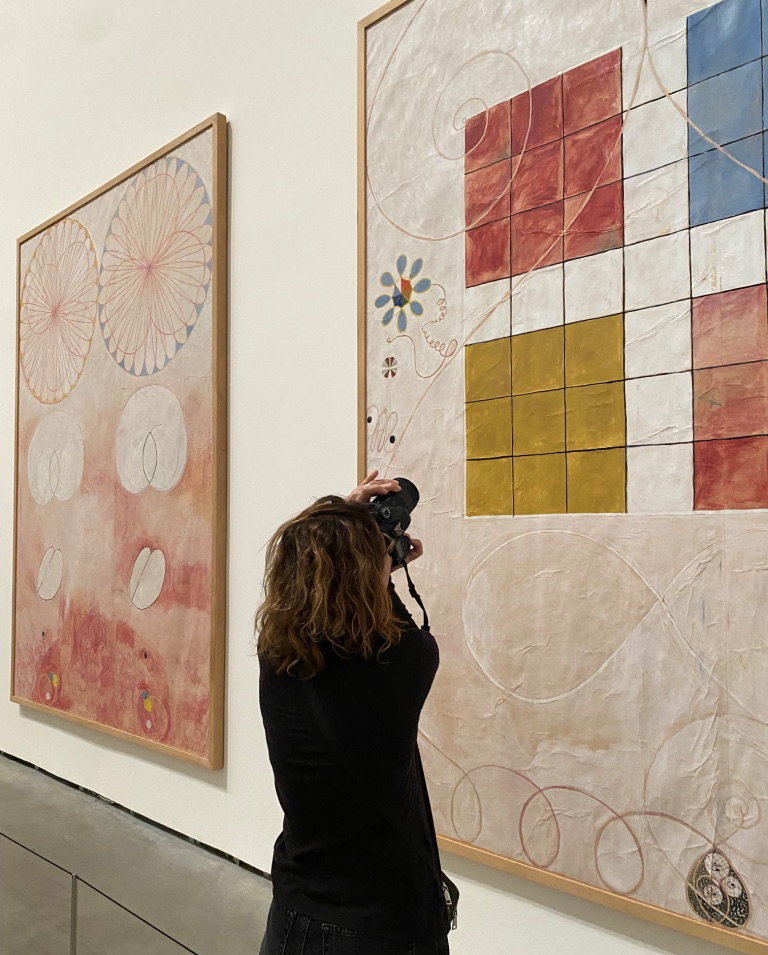
Hilma af Klint exhibition, Hilma af Klint Paintings Exhibition, Taking pictures at the Guggenheim Museum Bilbao 2025,
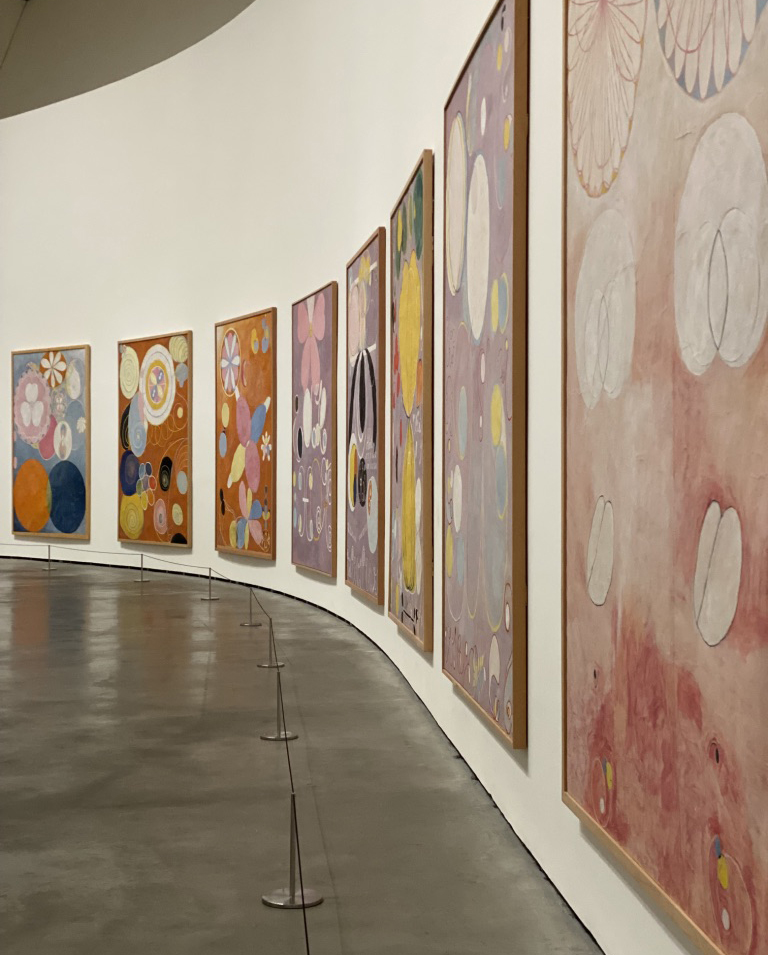
Hilma af Klint exhibition, A view of the Ten Largest, Guggenheim Museum Bilbao 2025, photo by ©Bogra art Studio, 2025
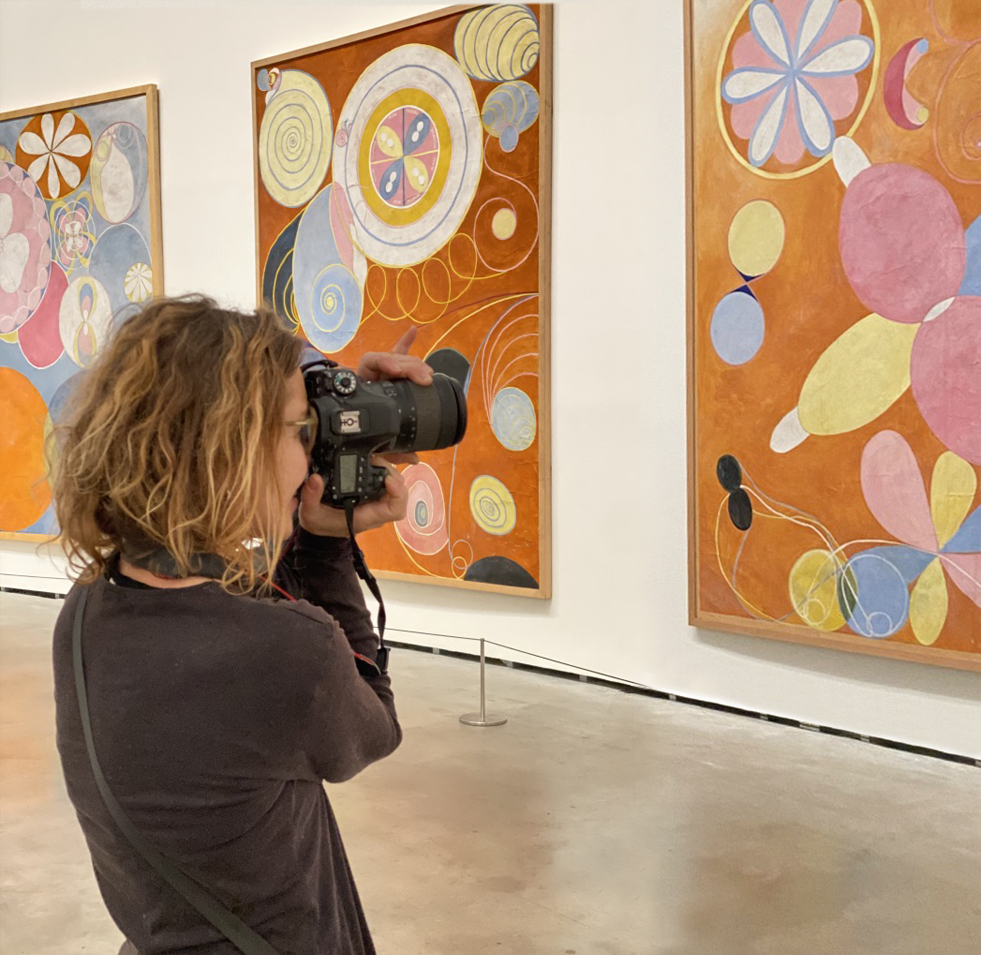
Taking pictures of the Ten Largest, Guggenheim Museum Bilbao 2025, photo by ©Bogra art Studio, 2025
Which a blue background, the first two paintings represent childhood; as the series advances towards youth, colors become more vibrant and take on a bright orange hue. The different phases of adulthood have a purplish tone, and in old age, the images have ocher backgrounds, become more sober, and include symmetrical and geometric figures. The yellow and blue spirals in the upper part of the initial painting seem to have been draw with a compass; under them, we can glimpse and almond shape or vesicle piscis, and ancient symbol that alludes to progression towards unity and culmination. Here, they may depict a deity that has incorporated both the female and the male principle.

The Ten Largest, Hilma af Klint Paintings Exhibition, Guggenheim Museum Bilbao 2025,
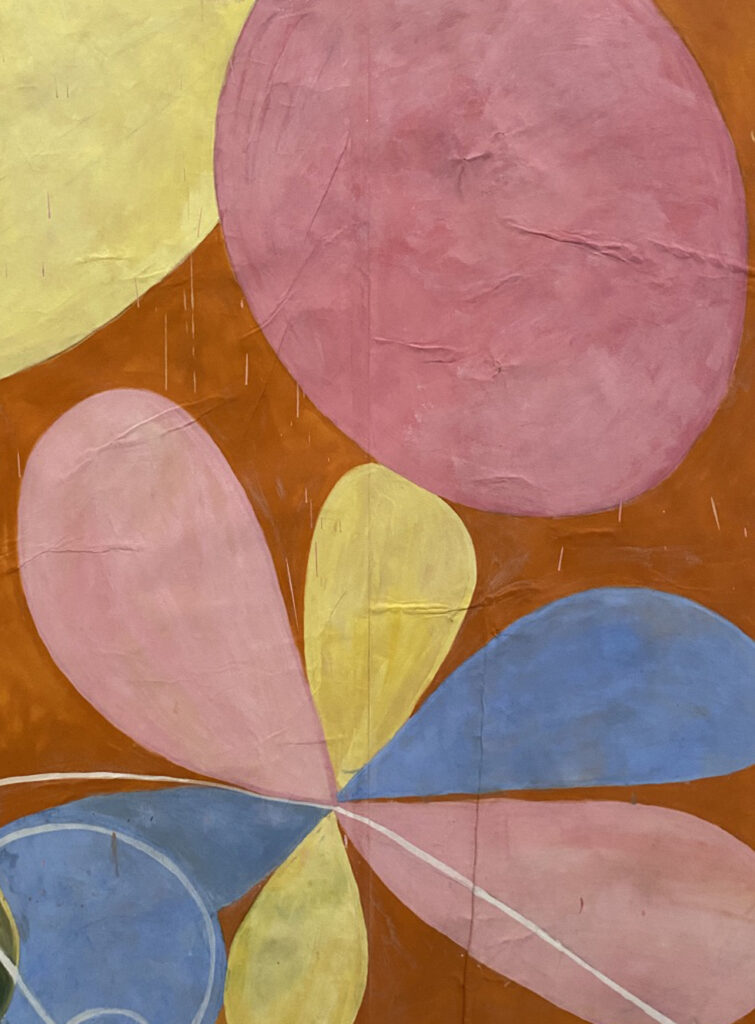
Detail of a painting, Hilma af Klint exhibition, Guggenheim Museum Bilbao 2025, photo by ©Bogra art Studio, 2025

Detail of a painting, Hilma af Klint exhibition, Guggenheim Museum Bilbao 2025, photo by ©Bogra art Studio, 2025
Paintings for the Temple
In 1906, Hilma at Klint (b. Stockholm 1862; d 1944) embarked upon the most ambitious, ground-breaking project of her career, the Paintings for the Temple. Over nearly a decade, she created 193 paintings and drawings, many of which were like little that came before. Bold, colourful, and often untethered from references to the visible world, there works explore forces and structures that af Klint believed were hidden to the eyes. In making these works, af Klint set aside the conventions of the Swedish academic tradition, and instead looked to the scientific and spiritual currents of her day. Incorporating ideas and imagery from these two areas, while forging hew own unique artistic vocabulary, af Klint established herself a pioneer in representing the invisible.

Paintings for the Temple, Hilma af Klint exhibition,Guggenheim Bilbao, Art Exhibition Hilma af Klint, ©photo Bogra art Studio, 2025
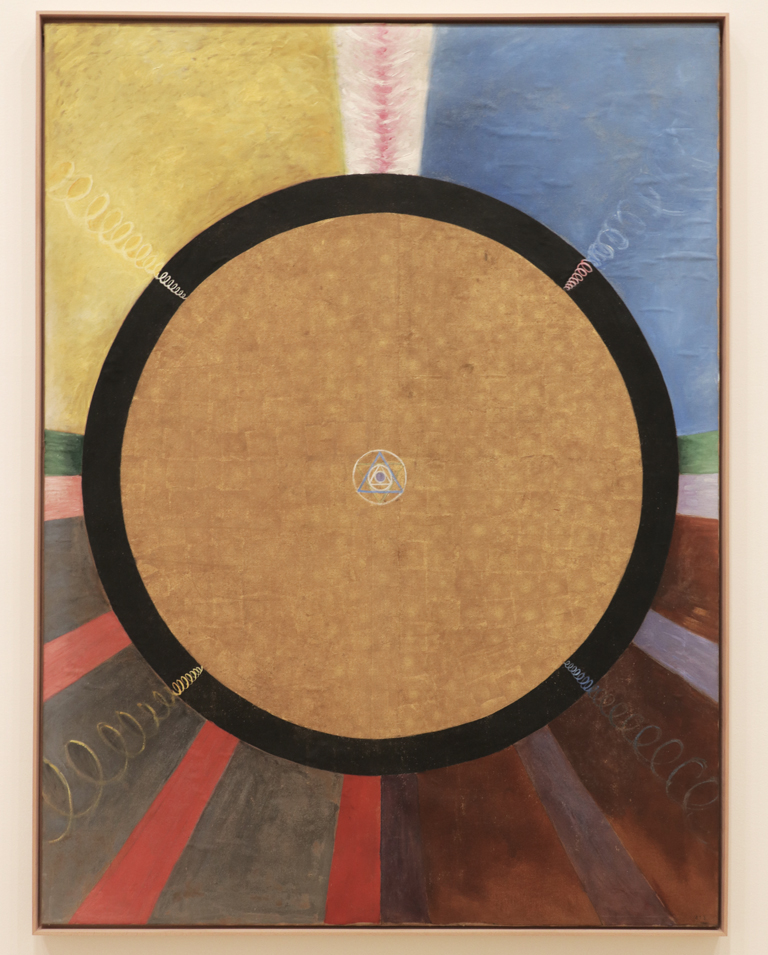
Paintings for the Temple, Hilma af Klint exhibition,Guggenheim Bilbao, Art Exhibition Hilma af Klint, ©photo Bogra art Studio, 2025
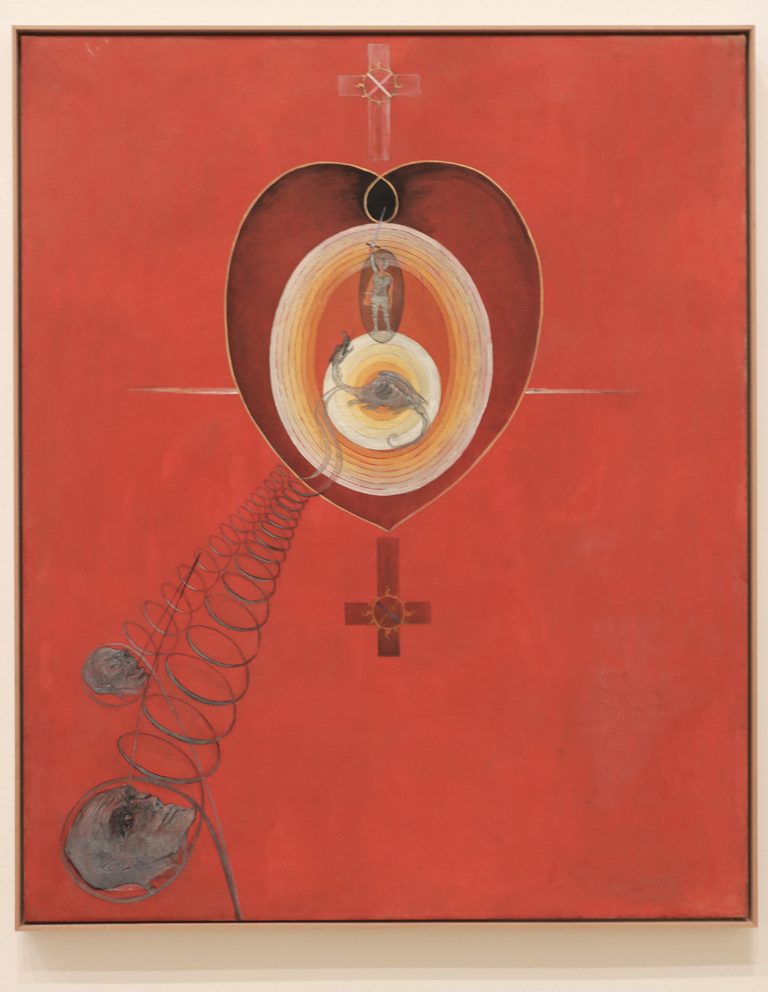
Paintings for the Temple, Hilma af Klint exhibition,Guggenheim Bilbao, Art Exhibition Hilma af Klint, ©photo Bogra art Studio, 2025
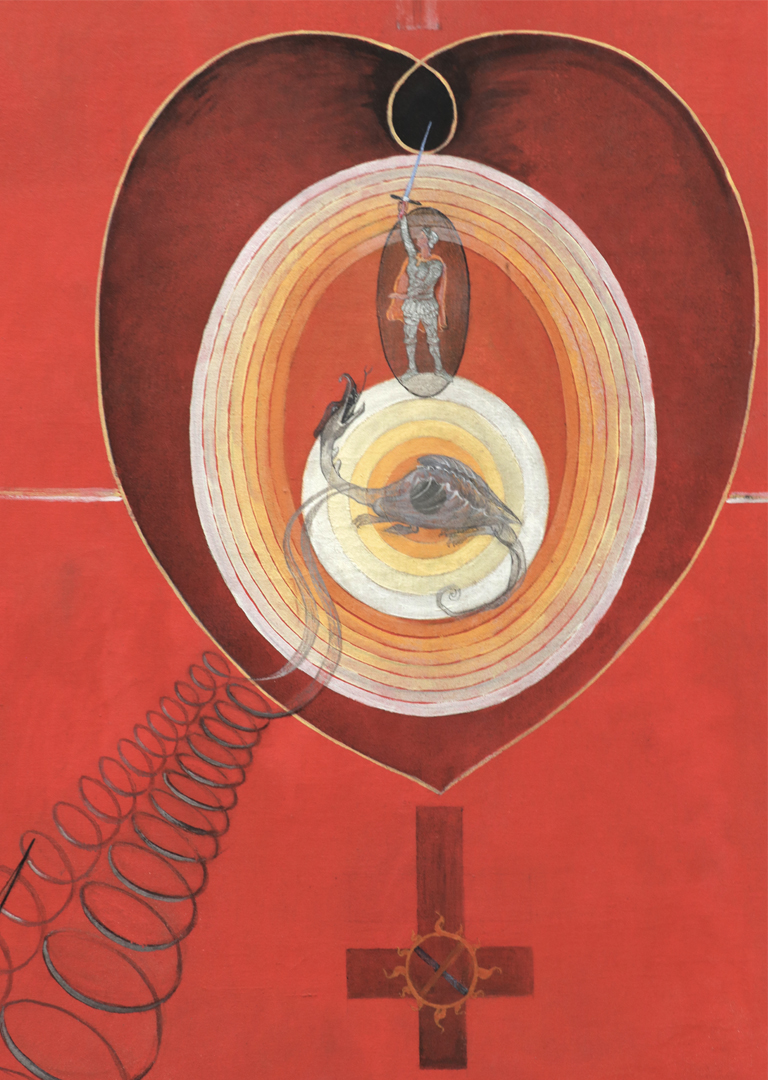
Paintings for the Temple, Hilma af Klint exhibition,Guggenheim Bilbao, Art Exhibition Hilma af Klint, ©photo Bogra art Studio, 2025
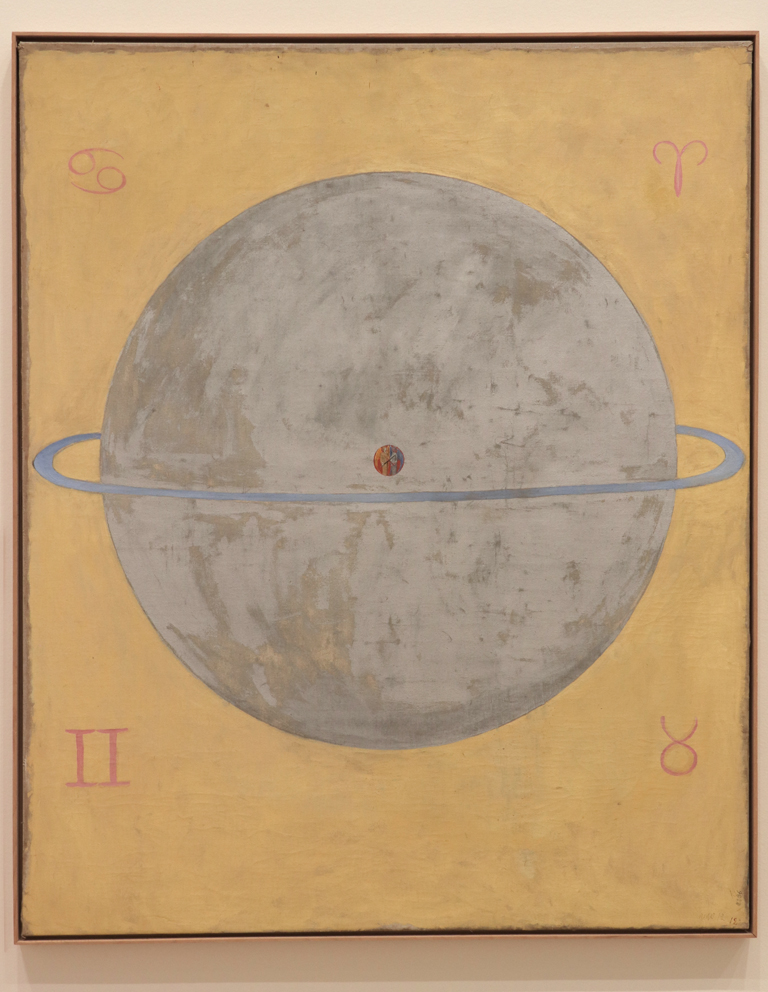
Paintings for the Temple, Hilma af Klint exhibition,Guggenheim Bilbao, Art Exhibition Hilma af Klint, ©photo Bogra art Studio, 2025

Paintings for the Temple, Hilma af Klint exhibition,Guggenheim Bilbao, Art Exhibition Hilma af Klint, ©photo Bogra art Studio, 2025
As af Klint made her way as an artist, she was living through profound social changes, including women´s rights movements. Despite the limitations placed on women during the late 19th and early 20th centuries, af Klint was able to study at Royal Academy of Fine Arts and went on to exhibit her more traditional figurative works, but she also had to struggle to devote herself freely to art. In a context where women artists were commonly through to be capable only of copying, not innovating, she rarely presented her more radical, abstract art publicly and struggled to find audiences, and stipulated that it not exhibited until two decades after her death, when she believed the world would finally be ready to understand what she had produced. Ultimately, it would take even longer. Although her art was finally shown in 1986, forty-two years after her death, it would take decades more before her extraordinary legacy finally earned the recognition deserves.
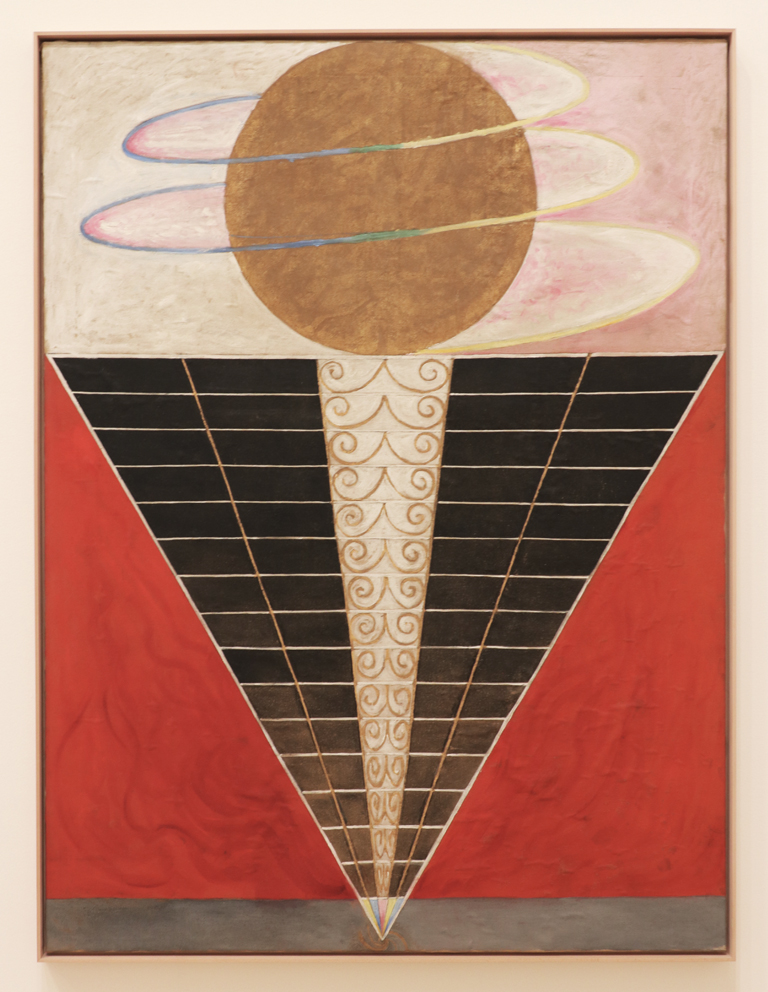
Paintings for the Temple, Hilma af Klint exhibition,Guggenheim Bilbao, Art Exhibition Hilma af Klint, ©photo Bogra art Studio, 2025
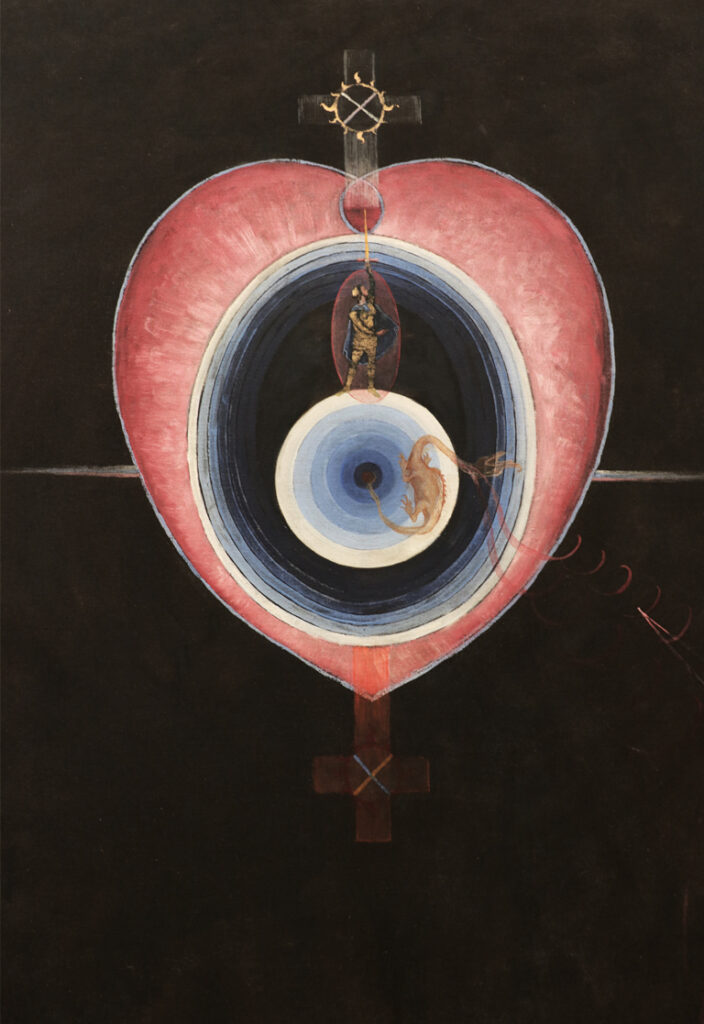
Paintings for the Temple, Hilma af Klint exhibition,Guggenheim Bilbao, Art Exhibition Hilma af Klint, ©photo Bogra art Studio, 2025
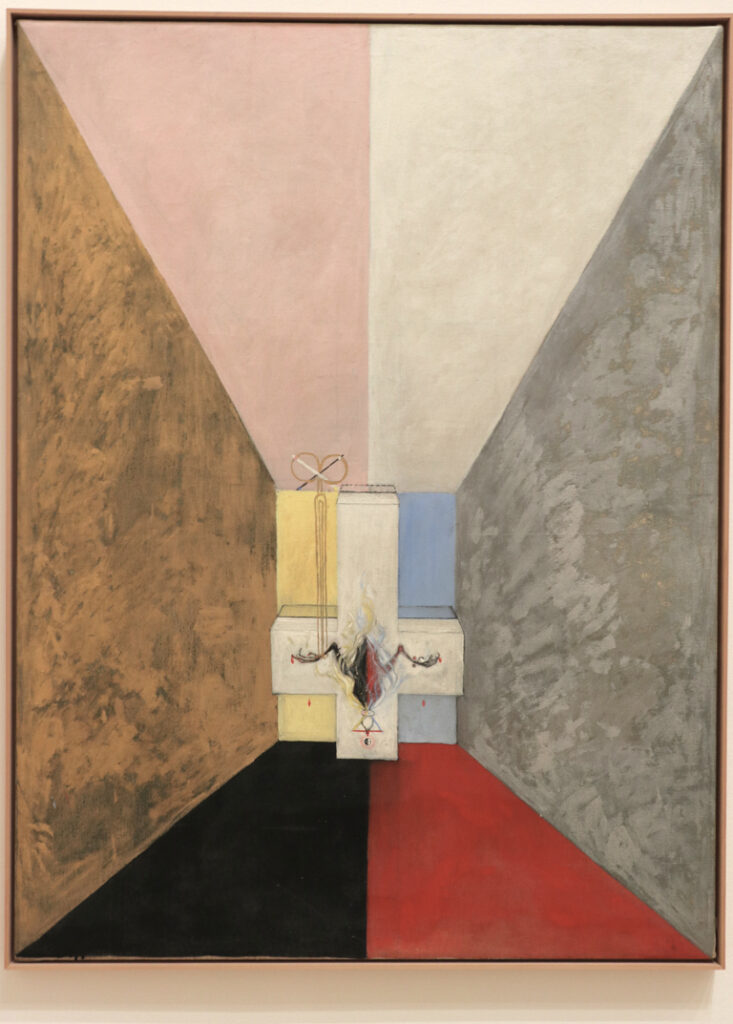
Paintings for the Temple, Hilma af Klint exhibition,Guggenheim Bilbao, Art Exhibition Hilma af Klint, ©photo Bogra art Studio, 2025
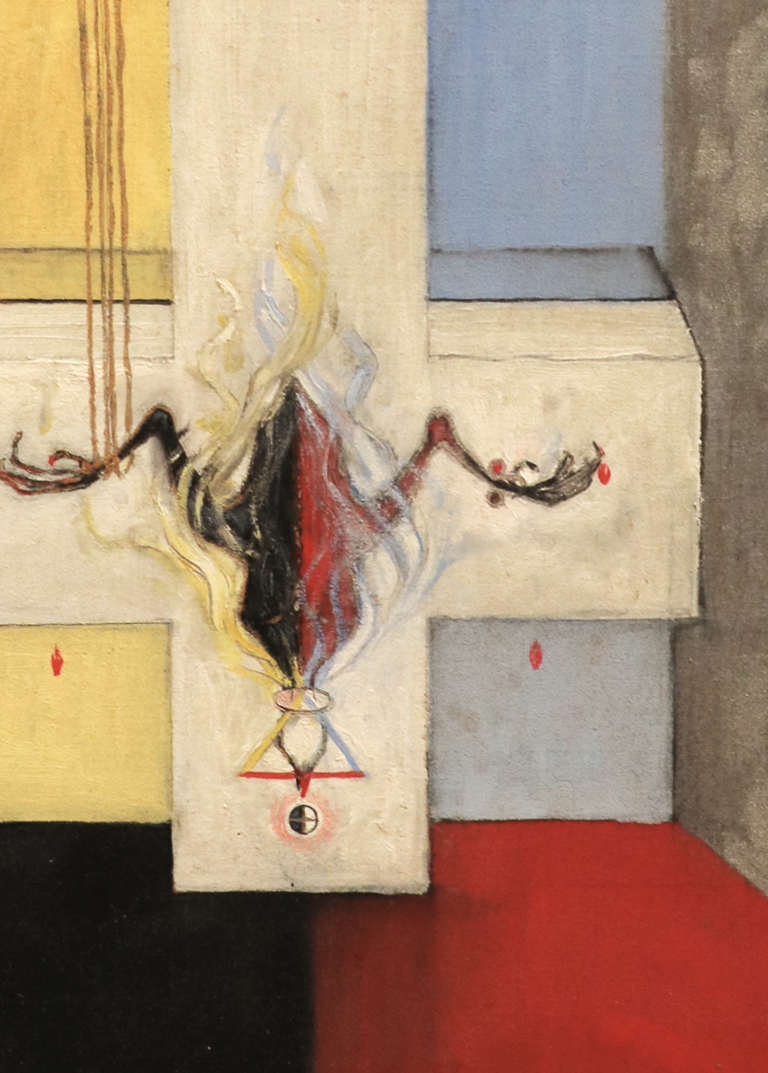
Detail Paintings for the Temple, Hilma af Klint exhibition,Guggenheim Bilbao, Art Exhibition Hilma af Klint, ©photo Bogra art Studio, 2025

Paintings for the Temple, Hilma af Klint exhibition,Guggenheim Bilbao, Art Exhibition Hilma af Klint, ©photo Bogra art Studio, 2025
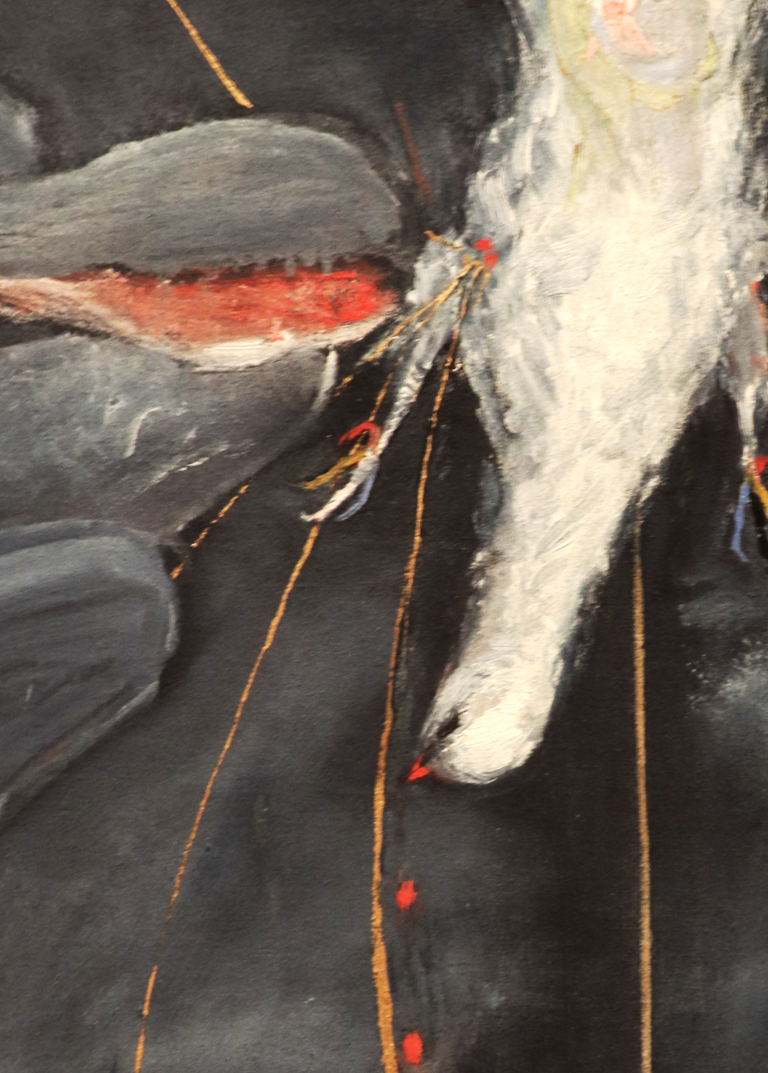
Detail Paintings for the Temple, Hilma af Klint exhibition,Guggenheim Bilbao, Art Exhibition Hilma af Klint, ©photo Bogra art Studio, 2025
This exhibition presents a survey of the Swedish artist´s career. In addition to the 110 works from the essential Paintings for the Temple, it also showcases her early more conventional creations, the automatic drawings she made with her spiritualist group The Five, her geometrically inflected series from the years after the Paintings for the Temple, and her later watercolours and sketchbooks.

